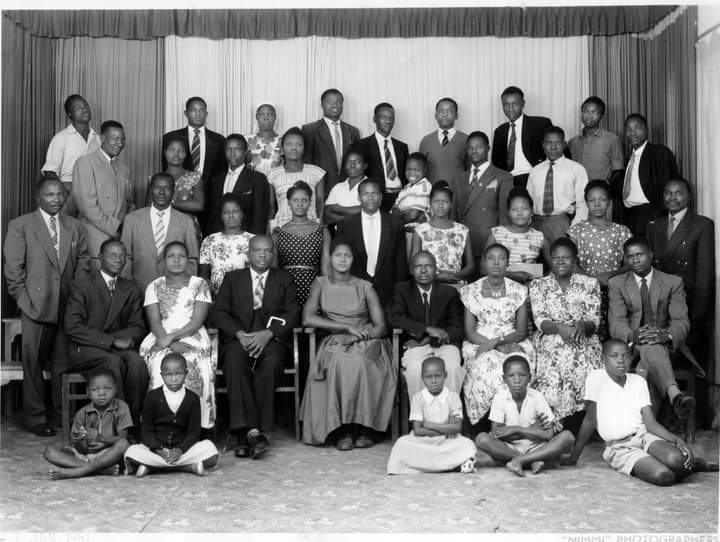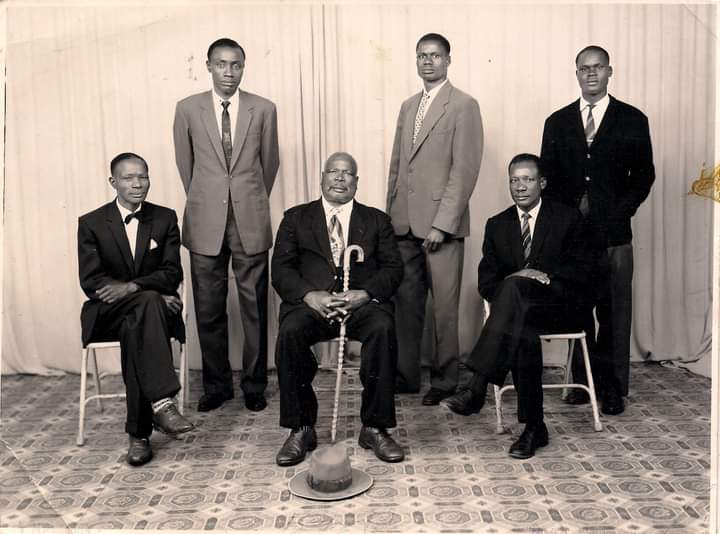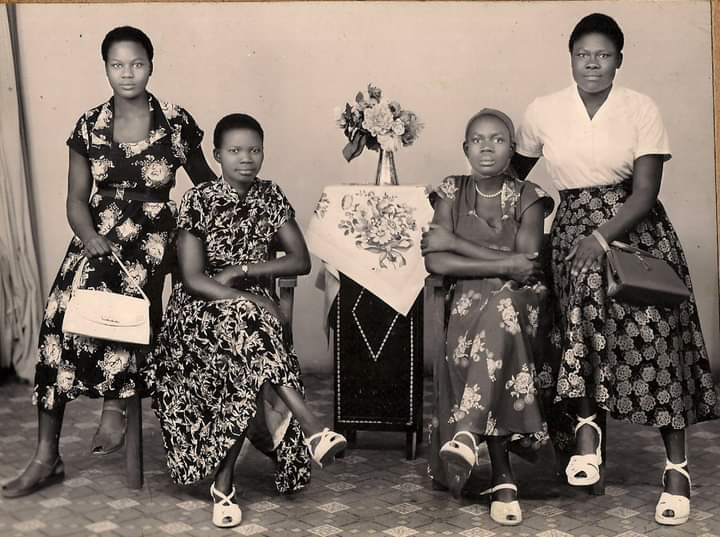Book Review: 'In Search of Abasuba Identity'
- Odhiambo Orlale
- Dec 9, 2022
- 5 min read
Author: Silvery Ochola Gaa
Publisher: Hart Publishers Ltd
Reviewer: Odhiambo Orlale
Cover Photo: Odhiambo Orlale
To access copy of the book: maochola82@gmail.com

Historian Silvery Ochola Gaa has put pen to paper and documented the history, origin, culture and politics of his Abasuba community which is one of the least known in the country.
In the 196-page book published in 2015, the alumni of Makerere University in Uganda, has made attempts to address the “distortion” by previous researchers, historians and writers about the Bantu group whose roots from their current home in present day Homa Bay and Migori Counties in Kenya go back to the Baganda and the Busoga Kingdoms in neighbouring Uganda, in mid-18th century.
Says the author, who hails from Gwassi in Homa Bay County: “This book is the most comprehensive account of the heritage and identity of the Suba people. It clears misconceptions about the history of the Suba people and their relation with the Luo and other surrounding tribes.”
Gaa joins a handful of authors who have done research and written books about the Abasuba who are Bantus and neighbours with the Luos, who are nilotes, and have over the centuries directly or indirectly pressurised them to assimilate to their language, culture and to use Luo names.
Historian-turned-politician
According to the author, who has made three unsuccessful attempts to venture into politics by vying for the Mbita parliamentary seat in 1969, 1974 and 1979, much research has been carried out and still continues to be carried out to produce the most refined and consistent history of the Abasuba.
His dream to one day represent his Abasuba community in the Kenya National Assembly, also known as the august House, came true this year, over 40 years later, when his son, Caroli Omondi, was elected Member of Parliament for Gwassi South in the just-concluded General Election on an Orange Democratic Movement (ODM) party ticket which was part of the Azimio La Umoja Coalition.
In mid 1980s there was a successful clamour by the Abasuba leaders led by former Mbita MP, Kanu sub-branch chairman, and Cabinet Minister, Peter Nyakiamo, for a district to be hived from Homa Bay District (since renamed County) when President Daniel arap Moi, who was from Turgen, a sub-tribe of the Kalenjins, gave in and also ordered the state broadcaster, Kenya Broadcasting Corporation (KBC) to start a special Okesuba radio service to cater for the Abasuba.
For the past 15 years, Lilian Ojwang, whose parents are Abasubas, and she knows how to dhum (speak the language) has been in charge at the KBC Kisumu station which operates an Abasuba service from 6pm. to 10pm. from Monday to Fridays. On the other hand, a private investor has also started a 24-hour FM Station based in Mfangano Island for the Abasuba listeners; it is called Ekialo Kiona (The whole world),
Indeed, the wealth of information contained in In search of The Abasuba Roots makes it valuable reading for all; Subas and none Subas as well.
Clamour for recognition
Gaa has dedicated the book to his sons, Peter Canisio and Augustine Odhiambo who provoked him one evening by asking him the following question: “Why are we called Abasuba and what is the origin of the Abasuba?”
Since the Abasuba migrated from Uganda in the mid-18th century according to oral literature, their identity, culture and traditions have been preserved notwithstanding invaluable information which has been buried in graves with their forefathers unrecorded.
The book’s foreword is by former Nairobi Governor, Dr Evans Kidero, who says: “For the first time a closer examination of the historical and cultural background of the Suba and the connections with the various communities in the inter-lacustrine kingdom of Uganda has been documented in this inaugural volume.”
Dr Kidero speaks with authority as a Suba elder, an insider and as a member of one of the Abasuba clans which relocated from Gwassi sub-county to Rangwe sub-county, also in Homa Bay County.
The former Governor wears many hats; he is married to Susan Mboya, the daughter of the late former Cabinet Minister Tom Joseph Mboya, who was Kanu Secretary General, and one of the most prominent members of the Abasuba community, before he was assassinated in broad daylight in July 5, 1969 in a Nairobi main street.

Other renown Abasubas include: former Cabinet Ministers Peter Nyakiamo and Joseph Okwanyo; others are former MPs Shelemiah Mbeo Onyango, George Osingo Migure, Alphonce Okuku Ndiege (brother to Tom Mboya), Dr Valentine Omolo Opere, Lawyer Felix Useru Nyauchi, Zaddock Madiri Syon'go. Current MPs are John Mbadi N’gongo, Ochieng Mbeo, Millie Odhiambo and Caroli Omondi among others.
Some of the prominent professionals are the late Meshack Okeyo, former Kenya’s Ambassador to the United Nations, businessman Sam Wakiaga, Kenya Airways Captain Gilbert Wandago, former Kenya Revenue Authority (KRA) director, Ken Onyonyi, East African Community (EAC) Peace and Security Expert, Leonard Onyonyi, former Human Resource Analysts at Los Angeles County, USA, Maureen Okeyo Orlale; and First Captain Alaska Airlines, Allan Opiyo Orlale and Alex Odongo Orlale among others.
Wall of Fame
In 2010, The Suba Elders’ Development and Cultural Council was registered one year after the 2009 national census was carried out and for the first time it placed Abasubas 20th numerically among the 43 tribes in the country.
The pioneer members and officials of the Suba Council of Elders were: Apollo Okeyo Omuga (Rusinga) who was later replaced as chairman by Thomas Okan’ga; Samuel Okech (Mfangano), Nicholas Ouma Ajwang (Gembe), and Asha Abonyo (Kaksingri).
In the Executive Office, the pioneer officials were: Pauline Oluoch, Belinda Atieno Ochola, Rose Odero, Archbishop Samuel Adede On’gola, and Nelson Ochieng Ounga. Says Dr Kidero: “This book therefore rekindles Suba identity debate, but more significantly, it meticulously chronicles credible account of the genealogy and history of the Suba people.”
The book is divided into 11 chapters as follows: Origin and settlement of Gwassi people; Wagassi settlement at the lake shores; The Abasuba; Economic activities of the Abasubas; Social organization of the Abasubas.
It finally concludes by focusing on the administrative structure of the Abasubas; Establishment of colonial rule; the author’s formative years (1949-1967), a Taste of politics; and Conclusion.
In the book, the author takes issue with many historians, particular of Luo orientation saying they have either by commission or omission ignored the Abasuba people and their history in its proper perspective.
Some of those historians and authors are Prof Bethwel Ogot (History of Southern Luo Volume 1), Prof Henry Akelo Ayot (History of the Luo-Abasuba), Samuel Ayany (Kar Chak Ruok Mar Joluo) Beginning of The Luos), Paul Mboya (Joluo Kitgi Gi Timbe Gi), Luo Traditions and Lifestyle), and Philip Oduogi Mionwa (Coming of the Abasuba Community to Subaland).
Rivalry among brothers over succession when kingship is hereditary is quite common, more so in polygamous families of kings/kabakas. Therefore, when Kabaka Kyabuka (1763-1780) died, there was rivalry among his sons as to who was to succeed him. His son, Junju eventually succeeded him and ruled for two years without the acceptance of his brother, Semakookiro.
Legend has it that later Semakookiro who was supported by the Abakunta clan had plotted and had his brother Kabaka Junju killed. But after taking over, Semakookiro turned against the Abakunta forcing them to flee and seek refuge across Lake Lolwe (later renamed Lake Victoria) in Kenya’s South Nyanza to Rusinga and Mfangano Islands and parts of the mainland in present day Homa Bay and Migori County plus Tanzanian coast region on Lake Victoria.
Overall, Gaa has tried to do justice to the on-going debate on the place of the so-called ‘lost tribes and dying languages’ of minority communities in the country some 60 years after independence from the colonial government which created borders that divided tribes that had lived and co-existed with their neigbours peacefully for centuries.
Now the challenge is for the now generation to pick up the pieces from the elders like Mzee Gaa and Hon. Nyakiamo and others who are still alive and promote and preserve the Abasuba culture and language for the sake of posterity.










Comments